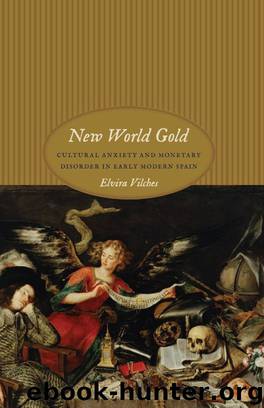New World Gold: Cultural Anxiety and Monetary Disorder in Early Modern Spain by Vilches Elvira

Author:Vilches, Elvira
Language: eng
Format: epub
Publisher: The University of Chicago Press
The more plentiful money is in Medina, the more unfavorable are the terms of exchange, and the higher the price that must be paid by whoever wishes to send money from Spain to Flanders, since the demand for money is less in Spain than in Flanders. And the scarcer the money is in Medina, the less they need to pay there, because more people want money in Medina than are selling it to Flanders. It is for this reason that in all Flanders and in all Rome money is more highly esteemed than in all Seville, and in Seville more than in the Indies, and in the Indies more than in New Spain, and in New Spain more than in Peru. Nowhere is so large an increment charged as in places where it is evident that money is greatly esteemed. The most profitable exchange transactions are those of Flanders and Rome on Spain, where money is clearly worth more than elsewhere.82
De Soto argues, in sum, that what causes a rise or fall in the market is the abundance or scarcity of silver and gold; if it is abundant, the rate is low, and if scarce, high.
In his “Comentario resolutorio del dinero,” an appendix to the principal edition of Manual de confesores, Azpilcueta described the eight factors that affected the value of money. These conclusions follow a series of chapters on exchange that elucidate the different uses of money and all kinds of cambios. The value of money varied for the following reasons: the fact that coins made from the same metal might not be available; the differing value of metals used in coins; the differing shapes and weights of coins; differing social or geographic conditions in the lands where the same coins circulated; decisions made by the authorities regarding the relationship between legal and intrinsic value; time factors; monetary supply and demand; and the abundance or scarcity of coinage.
According to economist Rodrigo Muñoz de Juana, the first five factors look at money’s fluctuation between its purely metallic content and the nominal dimension. Time is a purely accidental consideration, which, combined with other factors, can affect money’s value. The most interesting aspect is the quantitative factor. Azpilcueta observed that the value of money varied when the quantity of money changed in various types of transactions. If the price of goods increased because of supply and demand, money would behave in the same way:83
Download
This site does not store any files on its server. We only index and link to content provided by other sites. Please contact the content providers to delete copyright contents if any and email us, we'll remove relevant links or contents immediately.
Pale Blue Dot by Carl Sagan(4614)
The Rules Do Not Apply by Ariel Levy(4523)
Goodbye Paradise(3446)
Ogilvy on Advertising by David Ogilvy(3328)
Delivering Happiness by Tony Hsieh(3283)
Liar's Poker by Michael Lewis(3222)
Into Thin Air by Jon Krakauer(3131)
Purple Cow by Seth Godin(3069)
Rogue Trader by Leeson Nick(2825)
The Social Psychology of Inequality by Unknown(2764)
The Airbnb Story by Leigh Gallagher(2700)
4 - Harry Potter and the Goblet of Fire by J.K. Rowling(2530)
The Mind Map Book by Tony Buzan(2415)
Bossypants by Tina Fey(2373)
All the President's Men by Carl Bernstein & Bob Woodward(2263)
Claridge's: The Cookbook by Nail Martyn & Erickson Meredith(2257)
Six Billion Shoppers by Porter Erisman(2227)
Master of the Game by Sidney Sheldon(2182)
Alibaba by Duncan Clark(1979)
